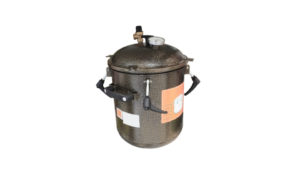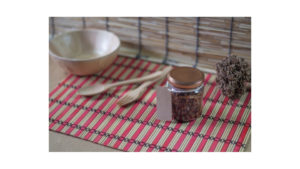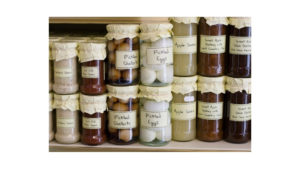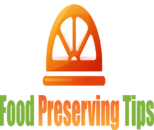This site is a participant in the Amazon Services LLC Associates Program. We are compensated for referring traffic and business to Amazon and other companies linked to on this site
Home-bottling was popular in the United Kingdom since the beginning of the 1900s, but America shipped several domestic canning machines during World War II.
I’m not aware of any UK offering domestic canning machines, although they may still be available in the United States.
However, our American readers should just think ‘canning’ where we say ‘bottling’.
Let’s read further to know about the benefits, methods, and safety checks of bottling.
Home canning or bottling, also known as putting up or processing, is the process of preserving food, especially fruits,
vegetables, and meats, by packing them into containers (jars like glass jars, steel, and tin cans)
(Check my post about the best Meats kind that can be preserved)
Then heating them to establish a vacuum seal and or weaken any remaining bacteria as a kind of sterilization that causes spoilage.
Bottling normally has a shelf life of one to five years, though it can last considerably longer in some circumstances.
As a general rule, The bottling process takes oxygen out of the cells, destroys the enzymes, eliminates the present microorganisms, and also generates an environment for non-producing micro-organisms (ie high acid, low oxygen preserve).
You also create a very strong vacuum seal, which keeps the jar indoors and maintains pollutants (i.e. microbiology)
outside, when you process your conserved food in a boiling water canner or pressure canner.
General Food categories that can be canned easily
- Pears and apples — To prevent discoloration, peel, core, and cut into quarters or slices, then place it gently salted water or add some lemon juice or ascorbic acid to the water.
- Rinse apricots, peaches, plums, and damsons-remove the stalks and
- Strawberries – Carefully de-stem and rinse the berries.
Food Canning Tips For Beginners.

Various foods have varying degrees of natural protection against rotting, prompting the use of a pressure cooker for the last phase.
High-acid fruits, such as strawberries, can be canned without preservatives and with a short boiling cycle, whereas marginal fruits, such as tomatoes, require a longer boiling cycle and the inclusion of other acidic ingredients.
Pressure canning is required for several veggies.
Once a can or bottle has been opened, food preserved by canning or bottling is immediately at risk of spoilage.
What Tools You Will Need to start Bottling Like A professional?
Glass jars that are solid and thick are required.
Examine the condition of the glass jar, particularly around the mouth.
They become unusable if there are any chips or cracks.
Rubber seals between the lid and the jar must also be in good working order.
These sealing rings degrade and expand with time, preventing a good, secure seal.
Replacing them is relatively affordable. Clean and corrosion-free metal lids and screw rings/bands are recommended.
In the store, a dab of Vaseline on the outside will help prevent corrosion.
Two main types are available on the market:
Half-quart and quart-size jars are the most practical sizes (500 ml or 1 liter).
- Bottles with a glass top and a rubber ring between the lid and the rim of the bottle are known as spring-clip top bottles. When the bottle is treated, this aids in the formation of a complete seal.
- Screw-on bottles have a glass or metal lid with a rubber ring that is held in place by a screw-on band. This band should be loosely fastened during processing (unless using the oven method) and then tightened while the bottle is cooling.
Pressure Bottler\Canner

If you only need to make a couple of bottles of tomatoes, for example, a regular pressure cooker will work.
If you’re serious about bottling, however, you’ll need something with more capacity.
The volume is expressed in quarts, which are a fraction of a liter (1 US quart = 0.95 Litres).
Canner equipment in the market range from 16 quarts (15 liters) to 25 quarts (23 liters).
A large pressure canner with 3 to 4 times the capacity can be found for about twice the price of a pressure cooker.
The cost of specialized equipment is well worth the difference between being able to process 5 one-liter bottles at once versus 2 one-liter bottles at a time.
For the water bath method, use a large flat bottomed pan or a specially made bath canner.
If you only need a water bath for canning on occasion, an existing large jam pan will suffice; however, if you get serious about bottling.
It’s worthwhile to invest in a purpose-built water bath with a rack, which will considerably increase the number of jars that can be processed in a single session while also saving time and energy.
Bottling Utensils
- Thermometer – For bottling and jam manufacturing, special high-temperature thermometers are available, which, although not required, make life much easier.
- Wooden Spoon with a Long Handle — For packaging fruit into bottles.
- Bottling Tongs — Not significant, but might be useful when handling hot bottles, such as those removed from pressure cookers or water baths.
- Oven mitts — you’ll be working with hot pans and jars.
- Large Baking Tray – To stand the bottles on when bottling in the oven.
- Heatproof Mats or a Wire Cooling Tray — to place hot bottles on while cooling.
- Trivet or Wire Tray for Pan Bases – used to prevent jars from cracking during processing due to direct heat.
- A timer is a watch or clock with a second hand that is used to keep track of time.
A General Rules for Food Bottling Preparations

Bottling Fruit for preservation
Fresh, firm fruit that is free of discoloration and illness is required for bottling.
Hard fruits should be washed in cold water and drained in a colander.
Soft fruits can be immersed in salted water for a few minutes to eliminate any grubs or insects, then rinsed in cold water and drained.
When bottling in syrup, adding a little ascorbic acid will help keep the color of fruits that discolor easily, such apples and apricots, from fading.
You can prevent discoloration by adding 200–300 milligrams of ascorbic acid (vitamin C) to a liter of syrup.
It’s available as a powder at a reasonable price. Because only a third of a gram is required, half a teaspoon appears to be adequate.
Example:
Apples and pears should be peeled, cored, and cut into quarters or slices, then placed in gently salted water to prevent discoloration, or added to the water with lemon juice or ascorbic acid.
Before packaging in jars, give it a short rinse in cold water. To make a solid pack, prepare as directed above and blanch for 2 or 3 minutes in boiling water or steam until just tender. Recommended packing warm.
Bottling to preserve Vegetables
Pick your vegetables when they’re still young and process.
They should be well cleaned or peeled as if they were going to be cooked right away.
If necessary, cut it into manageable pieces.
Bottled vegetables take a long time to prepare, so we recommend freezing instead.
Bottled vegetables, on the other hand, do not require electricity to stay frozen and are not affected by power outages. To keep the color of veggies after pressure bottling, blanch them as if you were freezing them.
Example:
Remove stems from tomatoes, wash with cool water, and drain.
If the tomatoes are boiled for 5 to 15 seconds and then immersed in cold water, the skins can easily be peeled off.
Cut in half or quarters for a solid pack.
Fill the jars tightly, adding salt on each layer.
You just need around 1 tsp per pound of tomatoes.
If the tomatoes are highly acidic, you may want to add a teaspoon of sugar per pound of tomatoes in addition to the salt.
Do not add any liquid to the jars after pressing the tomatoes down.
Bottling Syrup to preserve food

Bottled fruit might be in syrup, water, or a brine solution.
Syrup is preferred because it helps to keep the color and flavor of the food.
The syrup’s intensity is determined by the sweetness of the fruit and how it is packaged.
The proportions for syrups are typically 8 ozs (250g) to 1 pint (600ml) plus water.
Simple white granulated sugar can be used in syrups, while honey or golden syrup can be used for a different flavor. Boil for one minute after the sugar has been dissolved in half of the water over moderate heat.
Then pour in the remaining water. This method saves time by eliminating the need to wait for the syrup to cool enough to use.
Did You know what is Pressure Bottling (Canning) is?
The most energy-efficient way is to bottle under pressure, because increasing the pressure raises the boiling point of water and hence the temperature at which the food is processed, reducing the time required.
Learn Pressure Bottler Method for food preservation
The price difference is likely due to the fact that pressure canners have a significantly bigger capacity than pressure cookers.
The disadvantage of pressure bottling is that the number of jars you can fit in your pressure cooker at one time is limited, which is where purpose-made canners shine.
Because the botulism bacterium may withstand boiling water, pressure bottling is the only safe method for bottling low-acid vegetables.
For the time frame specified, the higher boiling point temperature ensures that the microorganisms are dead.
The general procedure is simple.
Fill the jars with boiling syrup or vegetable brine after packing the fruit or vegetables in hot jars.
Fix the lids to the jars loosely. While filling your jars, bring 1 1/2 pints (850ml) of water to a near-boiling temperature in the pressure cooker, then place your jars on a trivet so they are not exposed to direct heat and do not contact each other.
Bring the cooker to operating temperature with the cover on.
Cook on the L weight setting (5lbs) for high acid fruits, but on the M weight setting (10lbs) for low acid vegetables.
Check your instructions because different cookers have different techniques.
I let the steam out for 5 minutes before putting the weights on ours, but more recent ones have the safety release valve handle the purging for you.
Cook for the specified amount of time at high pressure, then remove from the flame.
Allow the cooker to cool naturally rather than rushing the process by pouring cold water over it.
Remove the lid and place the bottles on a cooling rack once they have cooled sufficiently to relieve the pressure inside. If required, tighten the seals.
If you’re not used to cooking under pressure, double-check that the pressure has been reduced by carefully lowering the weights.
The next day, double-check the seals on the processed fruit jars.
Know-How Elevation affects your Bottling
Depending on the air pressure, water boils at different temperatures.
Mountaineers frequently face this problem: they can only boil water at a low temperature, making it impossible to cook or make a decent cup of tea in the rarefied low-pressure air.
If you reside at a high elevation, you must take this into consideration when bottling.
Compensation timings and pressures at various elevations above sea level.
Check the Safety of Bottled Food

While the procedure is incredibly effective, it is not without flaws.
Hygiene and attention to detail, like any food preservation, are essential for successful and safe storage.
The seal cracking and allowing microorganisms access to the food is one significant risk.
These will grow and produce gas, which will usually result in an increase in pressure.
The ‘Can’ bulging is a sure sign that the contents have rotted in commercially canned goods if the tin has been
damaged.
They’re known as ‘blown’ in the supermarket industry.
That is no longer preserve food!
The food gets destroyed if you open a home bottled jar and there is a release of pressure.
Usually, the unpleasant odor will make this clear, but even if the meal smells fine, don’t believe it.
Resources: National Center for Home Food Preservation

Pingback: How do you preserve sardines at home?(Step-by-step guide) - Food Preserving Tips
Pingback: How to Can Peaches at Home? Best Tips For Beginners Food Preserving Tips